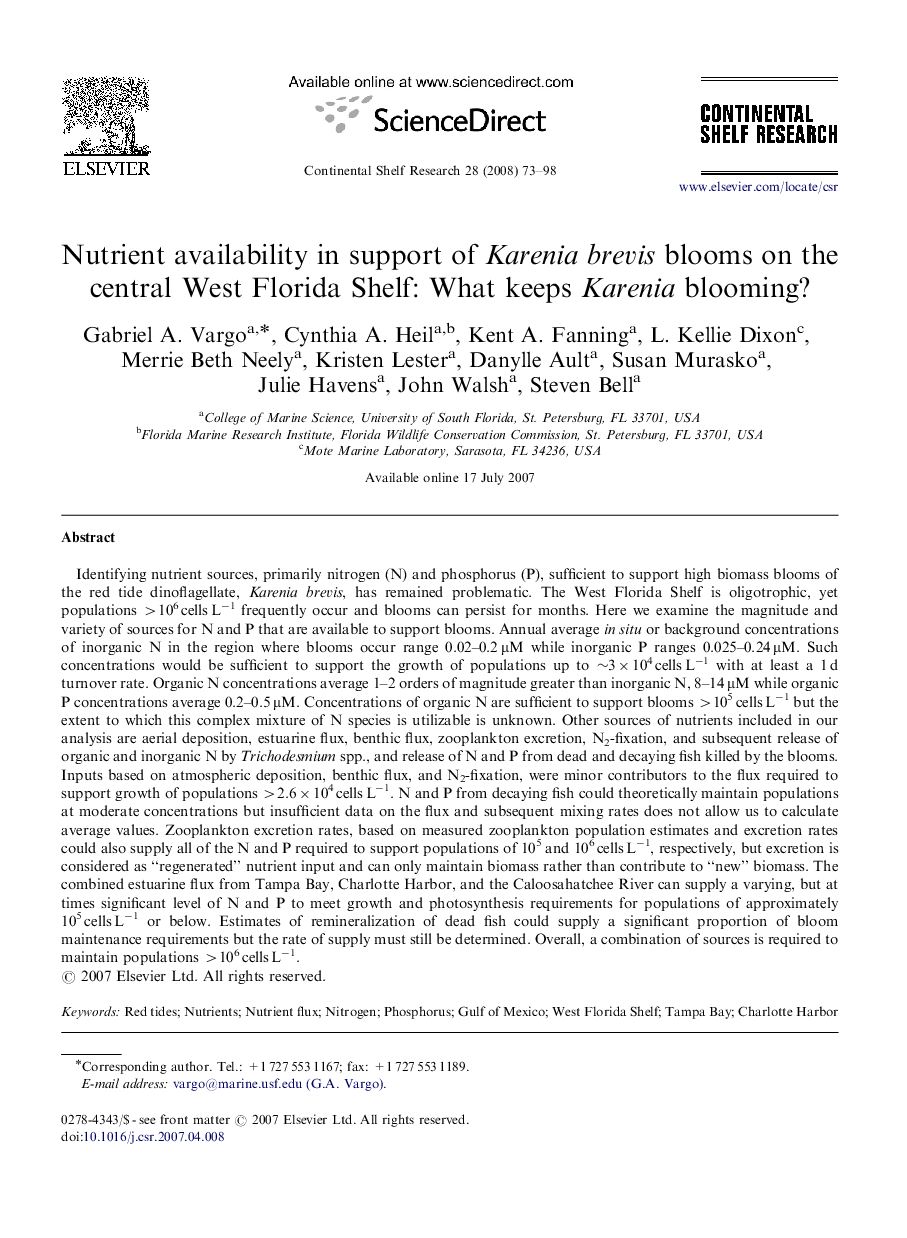| کد مقاله | کد نشریه | سال انتشار | مقاله انگلیسی | نسخه تمام متن |
|---|---|---|---|---|
| 4533352 | 1325185 | 2008 | 26 صفحه PDF | دانلود رایگان |

Identifying nutrient sources, primarily nitrogen (N) and phosphorus (P), sufficient to support high biomass blooms of the red tide dinoflagellate, Karenia brevis, has remained problematic. The West Florida Shelf is oligotrophic, yet populations >106 cells L−1 frequently occur and blooms can persist for months. Here we examine the magnitude and variety of sources for N and P that are available to support blooms. Annual average in situ or background concentrations of inorganic N in the region where blooms occur range 0.02–0.2 μM while inorganic P ranges 0.025–0.24 μM. Such concentrations would be sufficient to support the growth of populations up to ∼3×104 cells L−1 with at least a 1 d turnover rate. Organic N concentrations average 1–2 orders of magnitude greater than inorganic N, 8–14 μM while organic P concentrations average 0.2–0.5 μM. Concentrations of organic N are sufficient to support blooms >105 cells L−1 but the extent to which this complex mixture of N species is utilizable is unknown. Other sources of nutrients included in our analysis are aerial deposition, estuarine flux, benthic flux, zooplankton excretion, N2-fixation, and subsequent release of organic and inorganic N by Trichodesmium spp., and release of N and P from dead and decaying fish killed by the blooms. Inputs based on atmospheric deposition, benthic flux, and N2-fixation, were minor contributors to the flux required to support growth of populations >2.6×104 cells L−1. N and P from decaying fish could theoretically maintain populations at moderate concentrations but insufficient data on the flux and subsequent mixing rates does not allow us to calculate average values. Zooplankton excretion rates, based on measured zooplankton population estimates and excretion rates could also supply all of the N and P required to support populations of 105 and 106 cells L−1, respectively, but excretion is considered as “regenerated” nutrient input and can only maintain biomass rather than contribute to “new” biomass. The combined estuarine flux from Tampa Bay, Charlotte Harbor, and the Caloosahatchee River can supply a varying, but at times significant level of N and P to meet growth and photosynthesis requirements for populations of approximately 105 cells L−1 or below. Estimates of remineralization of dead fish could supply a significant proportion of bloom maintenance requirements but the rate of supply must still be determined. Overall, a combination of sources is required to maintain populations >106 cells L−1.
Journal: Continental Shelf Research - Volume 28, Issue 1, January 2008, Pages 73–98